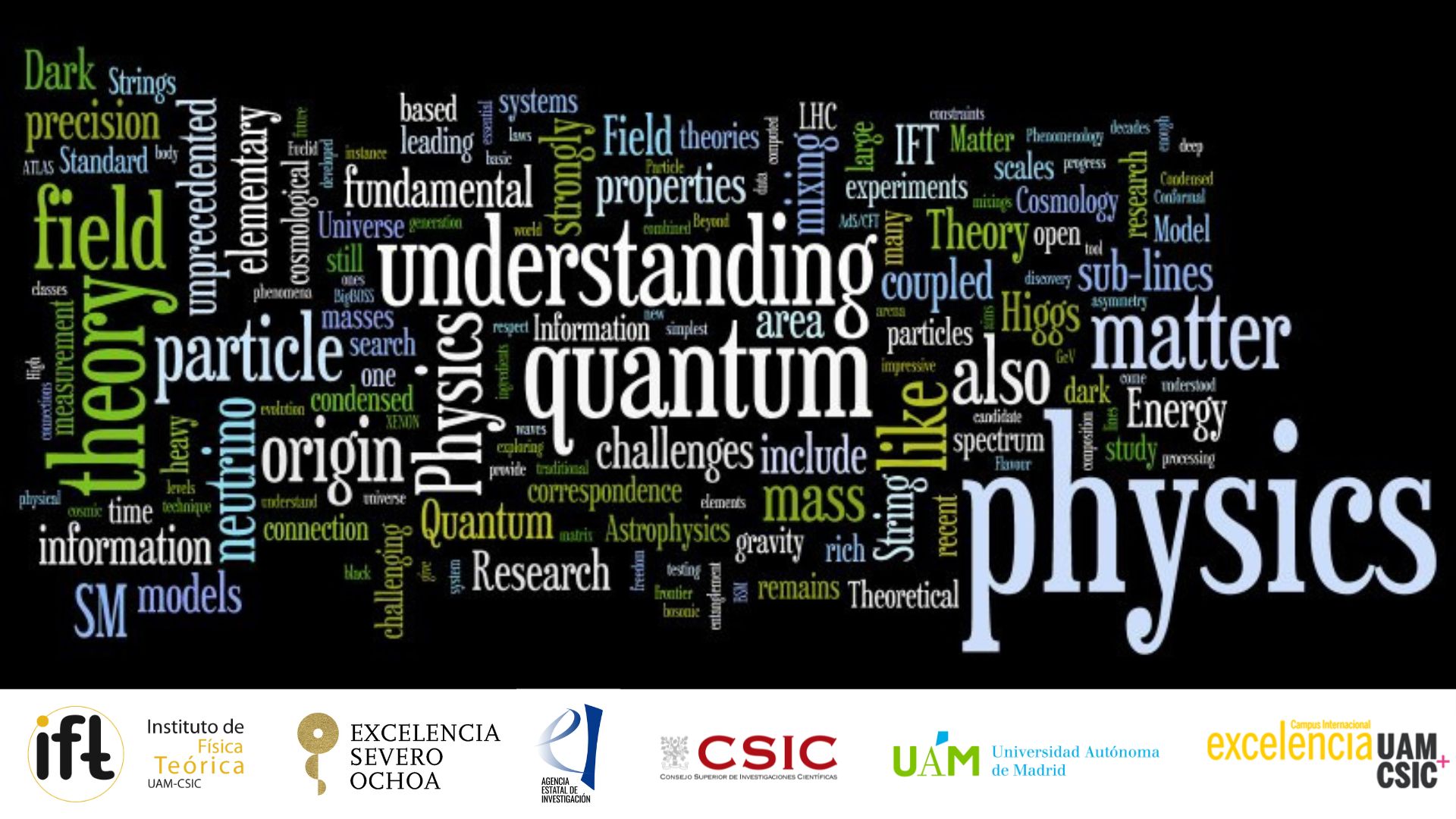Centro de Excelencia Severo Ochoa
Menu
Search

IFT Seminar Room/Red Room
In physics, to rewatch a solved problem from an higher perspective leads to extensions and generalizations. In particular, the archetype of the integrable problem is the harmonic oscillator or, equivalently, Gaussian theory. Departures from this model are typically addressed in perturbation theory. In this talk, I will propose two (non standard) mathematical methods to deal with different aspects of theoretical cosmology. The first problem faced is the computation of Quasinormal Modes (QNMs) of oscillation of a scalar field on a pure de Sitter (dS) background with an S-matrix like approach. In a QFT on de Sitter background, one can study correlators between fields pushed to the future and past horizons of a comoving observer. This is a neat probe of the physics in the observer’s causal diamond (known as the static patch). The use of this observable can give a generalization of the quasinormal spectrum in interacting theories, and the connection to the spectral density that appears in the Källén-Lehmann expansion of dS correlators. The second problem is the computation of the Primordial Black Holes (PBHs) abundance in a mathematical framework called Peak Theory. The method is independent on the specific inflationary model that one considers and therefore is general. I will review the computation of the probability density distribution of maxima for a scalar random field in the presence of local non-gaussianities. The physics outcome of this analysis is the following. If one focuses on maxima whose curvature is larger than a certain threshold for gravitational collapse, the calculations illustrate how the fraction of the Universe’s mass in the form of PBHs changes in the presence of local non-gaussianities.
Social media